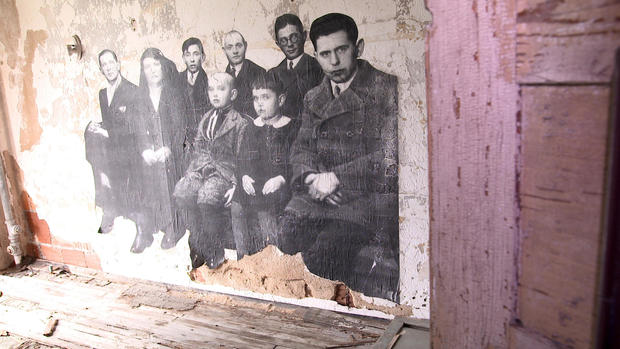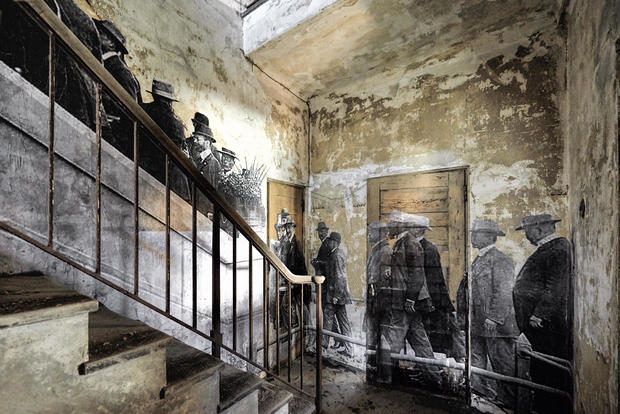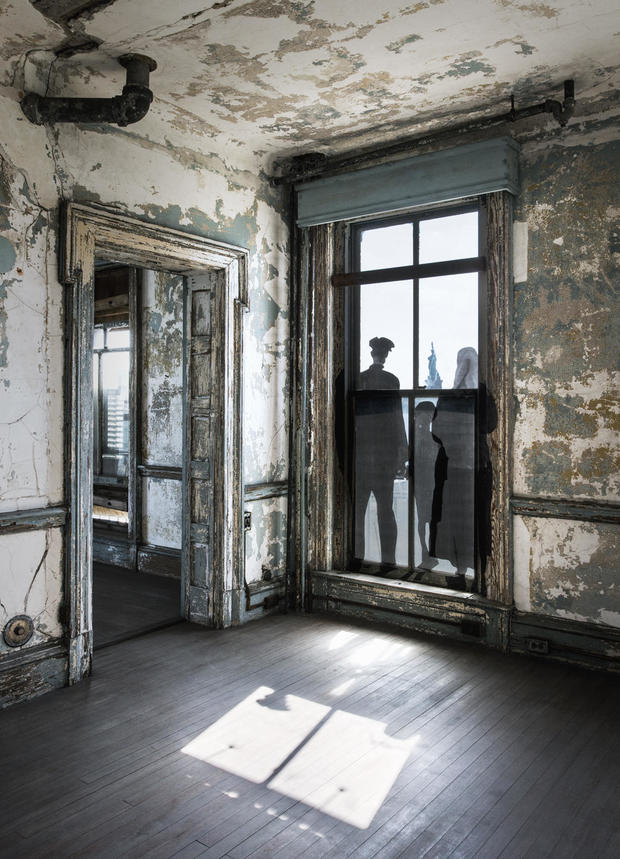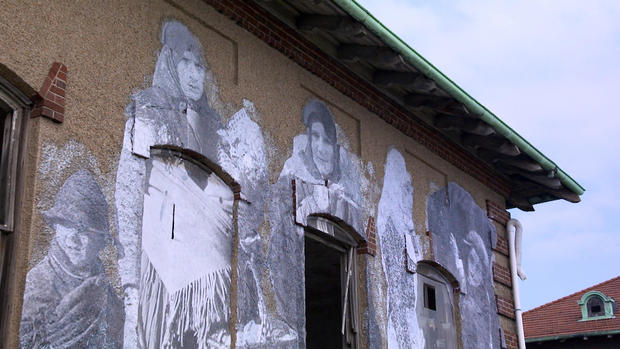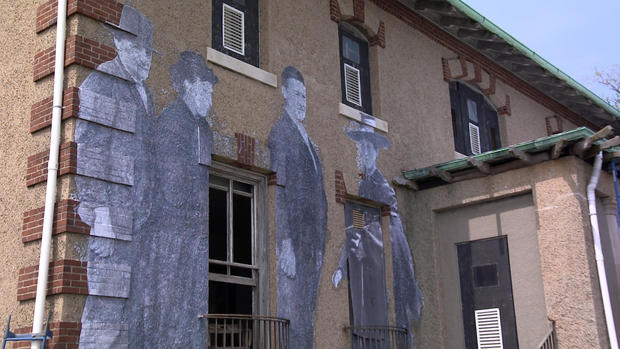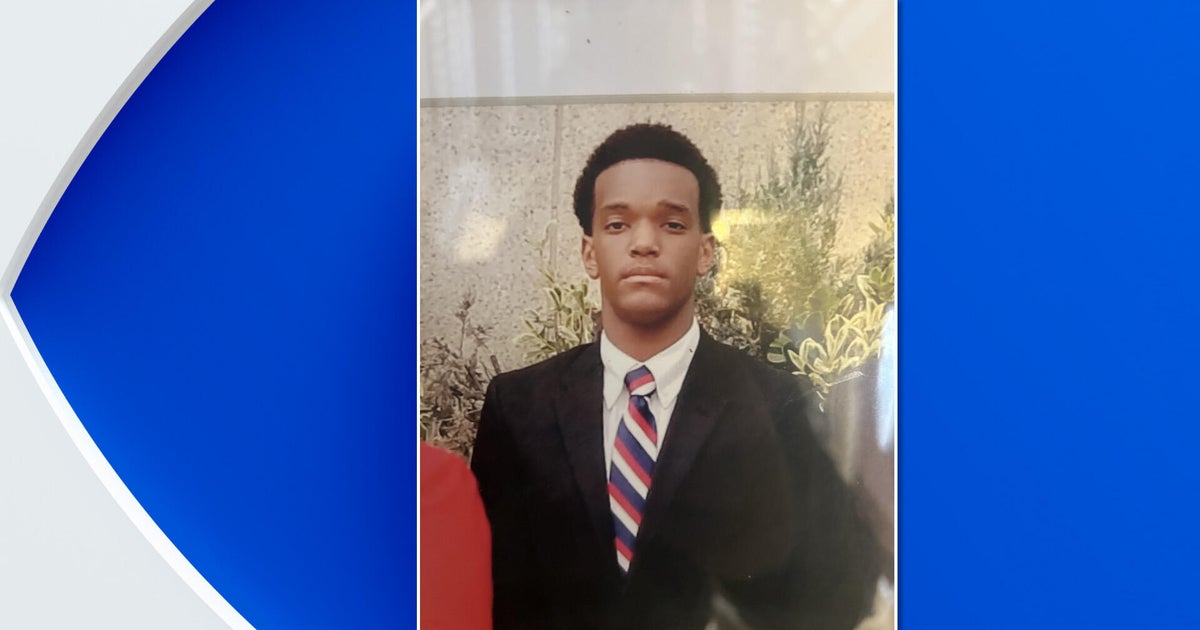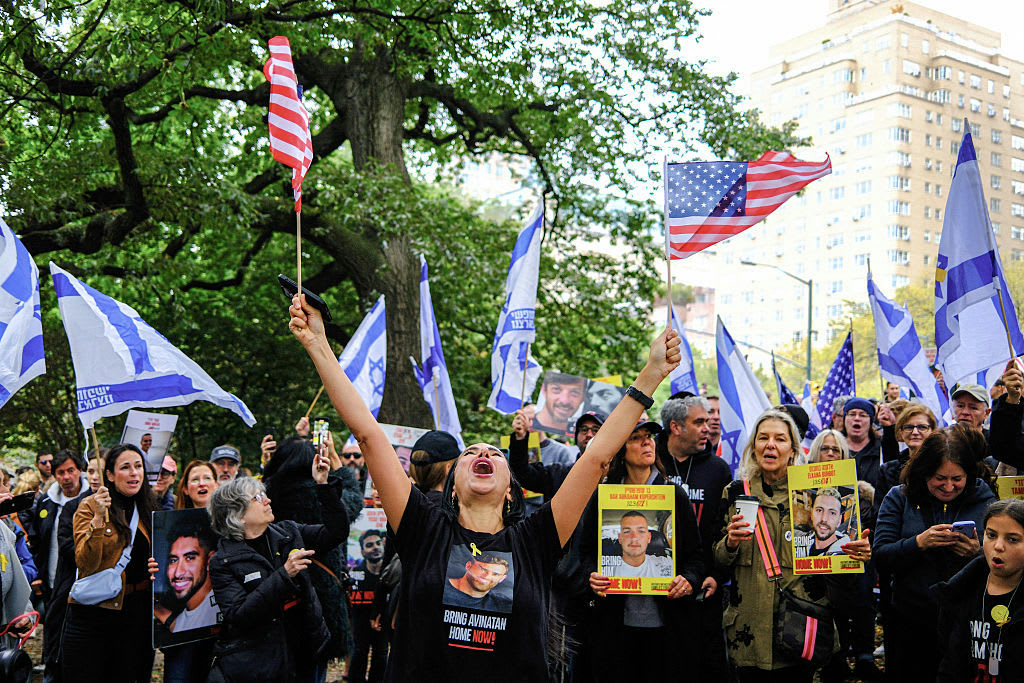Artist's hidden message on Ellis Island
It's faces that interest JR the most. The French artist, profiled by Anderson Cooper on 60 Minutes this week, made his mark on the art world—and the cities he visits—through the smirks and smiles he photographs.
He commands passersby's attention by pasting his giant black-and-white photo prints on hard-to-miss public locations, such as rooftops, sidewalks and the sides of buildings, until nature's elements wear them away.
"What's interesting about his work is that it's ephemeral," says Magalie Laguerre-Wilkinson, who produced Cooper's 60 Minutes' story about JR. "It doesn't last forever; you catch it in the moment."
A child of Tunisian immigrants, JR got his start in street art the conventional way: graffiti. On 60 Minutes, he tells Cooper why graffiti appealed to him, saying, "We all [have] that sense of 'I want to exist. I want to…show that I'm here. I'm present.'"
Today, the work of JR, who conceals his own visage behind a hat and sunglasses, is about showing the world that others exist—specifically, those who may be unseen, says Cooper.
"There are a lot of people in the world that we don't see, that we choose not to look at, that we choose to pass on the street," Cooper says. "And I think he challenges that."
JR's photographs of faces have appeared all over the world: on buildings in Istanbul, on rooftops in a Nairobi slum, in a hillside favela in Rio de Janeiro, in a looted police station in Tunisia during the Arab Spring. He also directed an Oscar-nominated documentary, appropriately named Faces Places.
In his youth, JR made street art under threat of arrest. Today, he's often allowed or invited to display his work. In one recent project, the National Park Service let JR paste giant reproductions of old photographs inside an abandoned hospital on Ellis Island. The photos show doctors and nurses who worked there—and some of the 12 million immigrants who passed through New York Harbor from late 19th century to the mid-20th century.
The infirmary, called the Ellis Island Immigrant Hospital, was the first stop for many of those looking for a new life. If immigrants had even a hint of illness, officers deemed them unfit for entry into the U.S. and sent them to the hospital. Some of the hospital's windows offered views of the Statue of Liberty and the New York City skyline—symbols of a new life, frustratingly out of reach.
"No one noticed," JR says. "No one have even noticed that they came from a different place."
"In that place you feel a lot of broken dreams of people who crossed the entire world and either died here, [or] had to go back to where they come from," JR tells Cooper, who toured the abandoned building with the artist and a 60 Minutes crew. Closed to the public for decades, visitors can now access the building and see JR's project in small "Hard Hat" tours.
Inside the hospital today, the immigrant photographs JR pasted bring a sense of life to otherwise derelict rooms. Close a shabby door, and you'll see the image of a young girl staring back at you. Turn a corner, and you'll find a group of immigrants appearing to ascend the worn stairs. In one especially moving installation, a family stands at a window with their backs to the viewer, as if to gaze at the Statue of Liberty.
"It's just a really kind of spooky, eerie place to wander around," Cooper says. "And the spirit of the people who had gone through there—I mean, it's all kind of still there."
JR remembers working on his exhibition inside hospital when he began to connect the past with the present. As the child of immigrants himself, he wondered: Where is the Ellis Island of today? That question sparked an idea. He wanted to post photos on the outside of the hospital—only this time, they would show modern-day migrants. The National Park Service, which oversees Ellis Island, gave him permission—but only if he used archival photos of turn-of-the-century immigrants.
He agreed—to a degree.
"I think JR kind of dug into a little bit of his street-smart old ways, where he used to be a graffiti artist and he would do things, you know, that were a little bit illicit," Laguerre-Wilkinson says.
This time, JR did something he rarely does. He tweaked the photos, using the bodies of 19th and 20th century migrants but swapped their faces with those of modern-day Syrians that he had photographed recently at a refugee camp in Jordan.
In the video above, Cooper asks him if the people in charge of Ellis Island ever found out.
"No one. No one noticed," JR answers. "But no one have ever told me, 'Those people looks very dangerous, like they shouldn't be on the wall,'" he says. "No one have even noticed that they came from a different place."
JR says he hopes the visitors who see the photos in his Ellis Island project will realize that the people in them are more than just history. Like his other projects, he wants to show they are present; they exist.
"There's a lot of people in the world that we don't see, that we choose not to look at, that we choose to pass on the street," Cooper says. "We choose to think we know them, and then they're actually very different. And I think he challenges that, and I think that's one of the interesting things about him."
The video above was produced by Ann Silvio, Brit McCandless Farmer, and Will Croxton. It was edited by Will Croxton.
Photos and Artwork courtesy of UNFRAMED SA and the National Park Service, Statue of Liberty National Monument, National Archives


